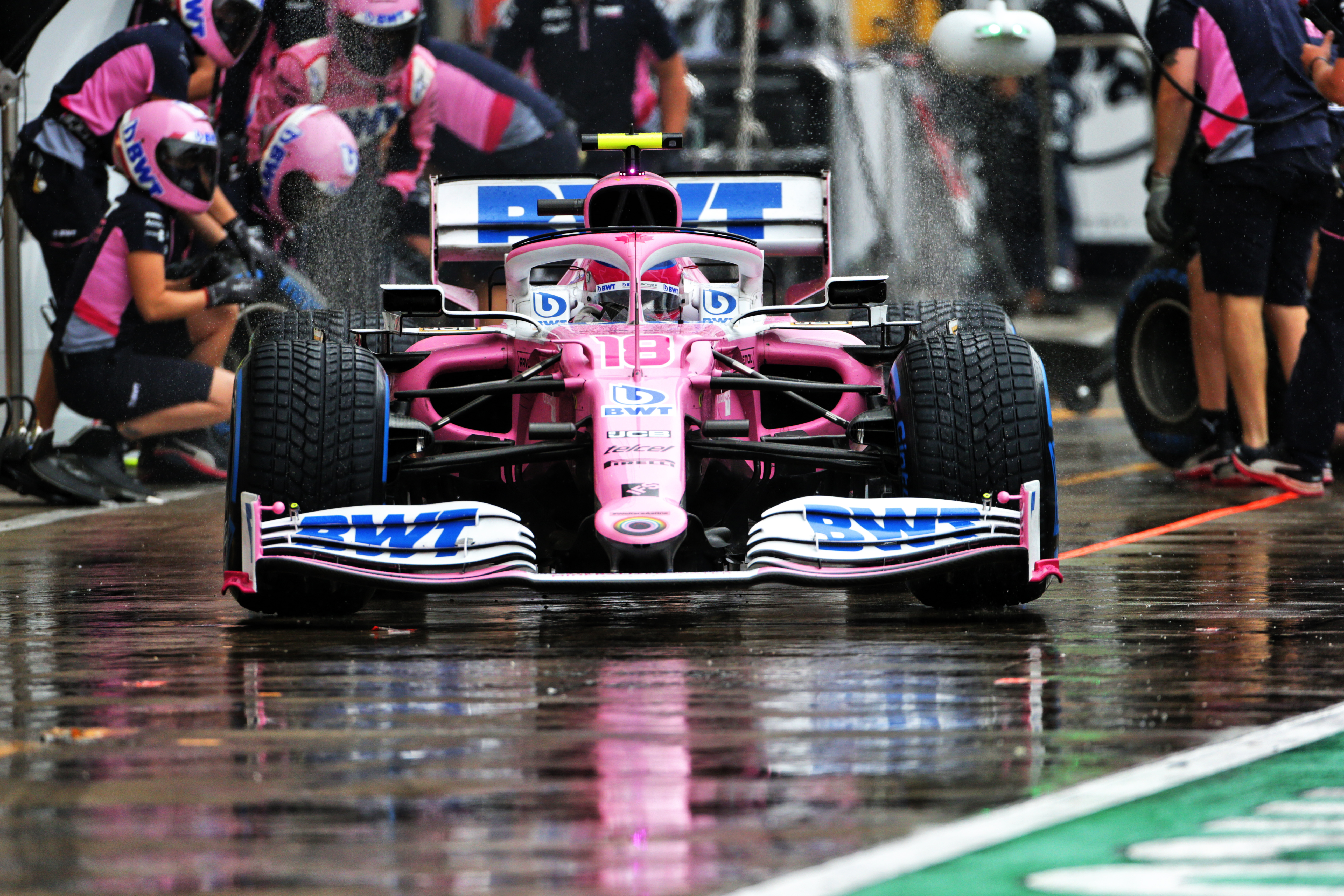Up Next

Amid the FIA’s confirmation that Renault’s protest into the Racing Point RP20 was admissible, the stewards announced they’ve had components of the car impounded while ordering Mercedes to provide the brake ducts of its title-winning W10 – the car that Racing Point openly based its 2020 challenger on.
We’ve put 10 questions to our Formula 1 technical expert Gary Anderson in order to shed a little more light on how this curious case might play out.
What is Renault’s objection to the Racing Point?
Renault, like many other teams, believes that Racing Point is using either parts from Mercedes, or has copied the design of parts from Mercedes that are ‘listed parts’. These are the components, including the bodywork, that a team must design itself and own the intellectual property to.
Why do you think the brake ducts might have been specifically targeted by Renault?
To protest, you have to be specific in what you are protesting. You can’t just generalise, and the front and rear brake ducts were added to the listed parts list this year. That probably isn’t a coincidence and perhaps Renault believes this gives it a starting point to prove the similarities go beyond simply observation or that, according to the rules, Mercedes has the ‘exclusive right’ to use that design as it’s a listed part.
How difficult would it be to ‘replicate’ brake ducts from another car using only photos?
This would probably be the most difficult component on the car to do that with. With a brake duct, it’s not just what you see that makes it unique, it’s the internal design. Getting access to and taking pictures of the internal components would be more or less impossible.
How might a team go about attempting to prove listed parts were not designed as Racing Point said they were?
It’s very difficult to prove without access to the team’s CAD design log system. The FIA can, and probably will, access this and from that it can look at the design tree that created and developed this component. If it started its design life from another CAD file, then it’s in there somewhere.
Racing Point has said several times it worked with the FIA technical department to ensure it was satisfied with its approach. From what you know, should it be confident it will be ruled legal or has it risked going too far with its deliberate copy of the Mercedes?
As long as Racing Point has been open and honest with the FIA as to how it went about this project, it should have nothing to worry about. But an F1 car is made up of thousands of parts and it would be very difficult for the FIA to check or authorise the use of every individual component.

What do you think of Renault’s timing with this appeal?
It wasn’t quite a sporting as Red Bull’s protest of the Mercedes DAS. If the Mercedes DAS was found illegal, Mercedes could simply have locked it in one position – but if the Racing Point brake ducts or any other part are found to be either a direct-supply Mercedes component or designed from a Mercedes CAD file, Racing Point would probably not be able to race.
McLaren team principal Andreas Seidl doesn’t like the approach Racing Point has taken but said last week there were ‘no grounds’ for protest. Why do you think Renault has a different view?
None of the other teams are happy with Racing Point’s approach because they believe it has just gone that little bit too far. But it is very difficult not to be led by what another successful team is doing. Racing Point has probably taken this view a little too far and its biggest problem is that it is actually achieving results. If, like on many occasions, a team copies another team and it makes no difference to its performance, no-one would have cared.
How difficult is it to ‘copy’ a car in this way to the level Racing Point has achieved?
It is very, very difficult. It’s not always what you see that makes a car work, it’s what’s underneath and that’s all very difficult to get access to. If, in the past, we wanted to try to design a component that another team was using we would get one of the photographers to take loads of pictures of it and also get them to take pictures of the same component on our car. First, we would attempt to replicate our own component to see how close we could get to the real thing. If you could do that then you would have reasonable confidence in what you could design from the pictures of your competitor’s component.
You’ve had an indirect involvement in some cases like this before. How complicated is an investigation like this going to be?
It’s going to be very difficult if this goes to a court. It gets into intellectual property law and that’s a minefield in itself. This and the ruling on it needs to be kept within Formula 1 – between the FIA, F1 and the teams. There are enough high-end technical people to rule on this. Yes, bring in a representative form each team to add their two cents’ worth but make the decision based on people directly involved in what is a very complicated sport.
Are F1’s listed parts regulations clear and workable or will they need to be clarified off the back of this case?
From my point of view, the regulations in general are just too complicated. I suppose it depends on the outcome of this protest, but clarification or simplification – and, if it’s possible, both at the same time – never goes amiss.
The bigger question here is firstly, if Racing Point is found to be using components directly designed from a Mercedes drawing, how did it get them? And secondly, was Mercedes fully aware of what’s going on?






